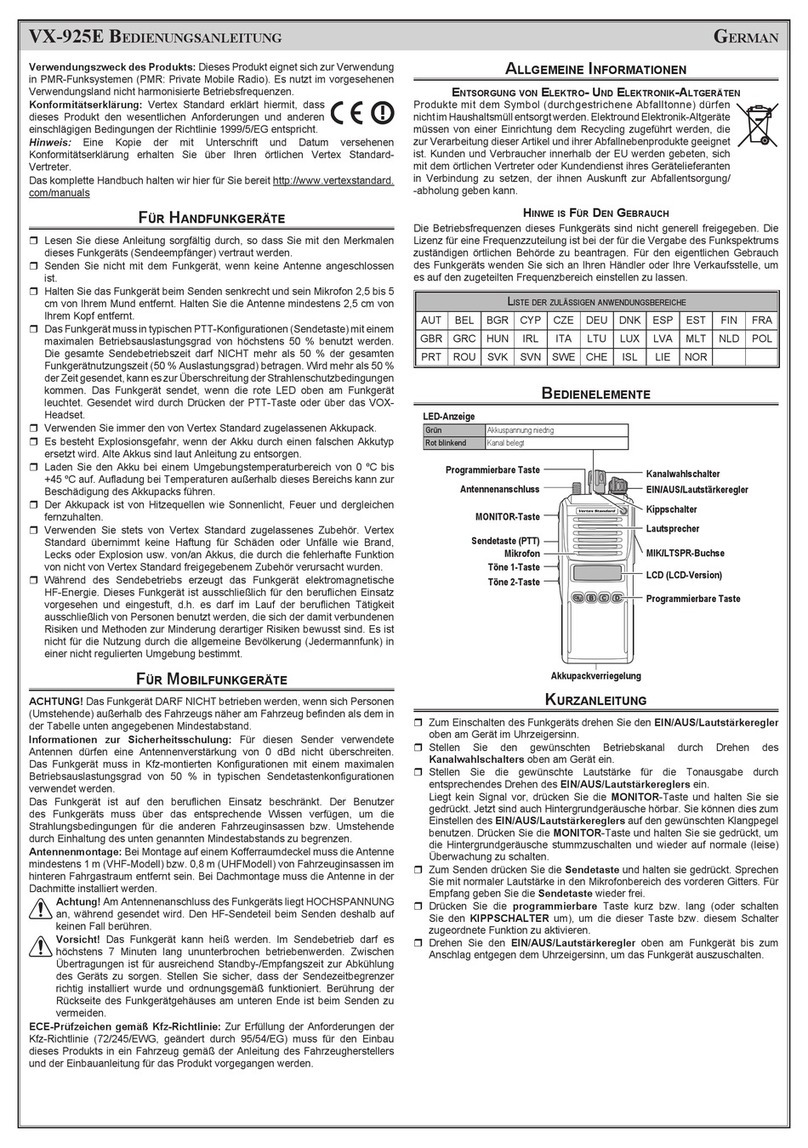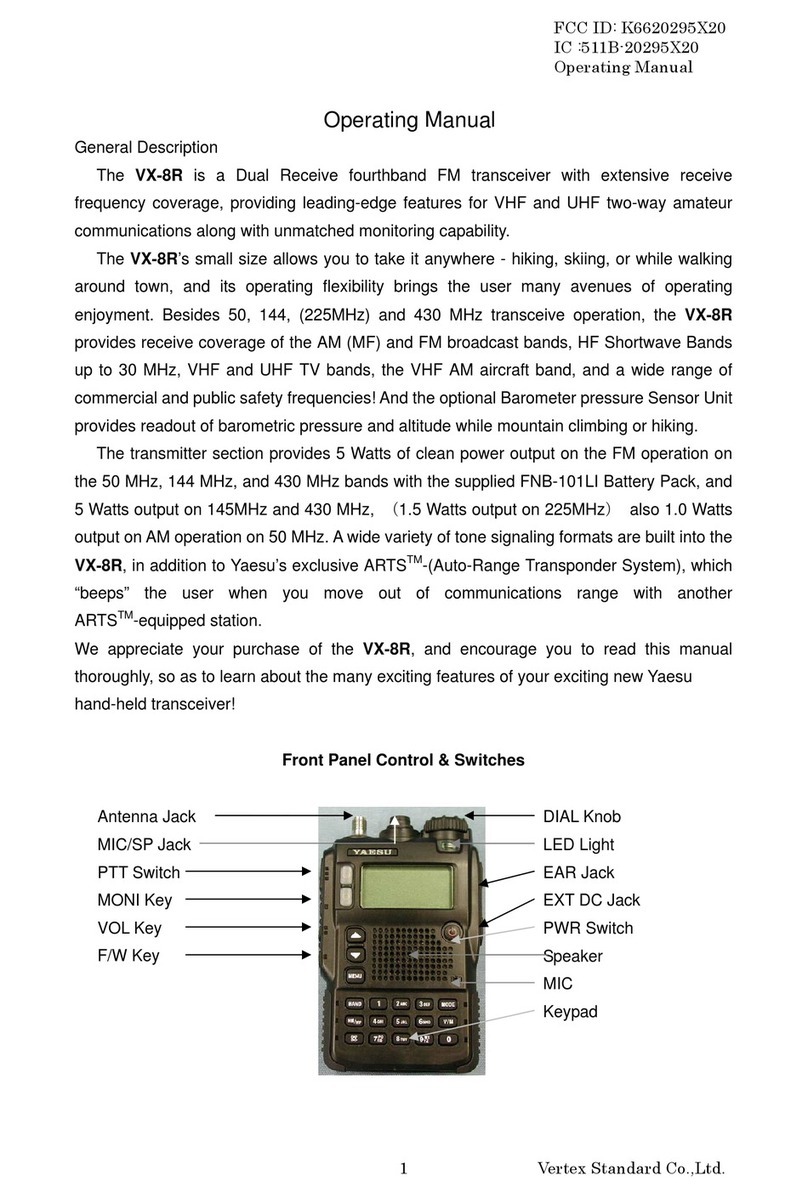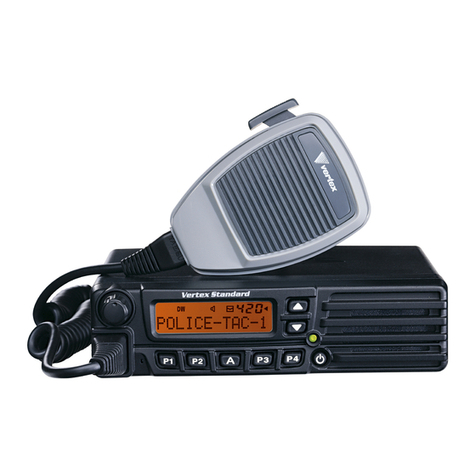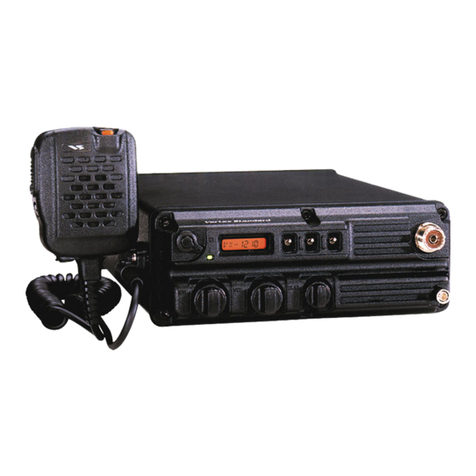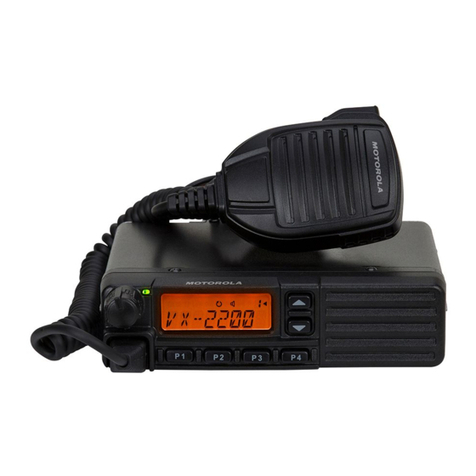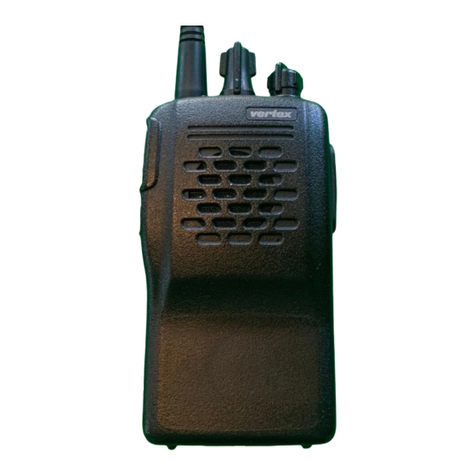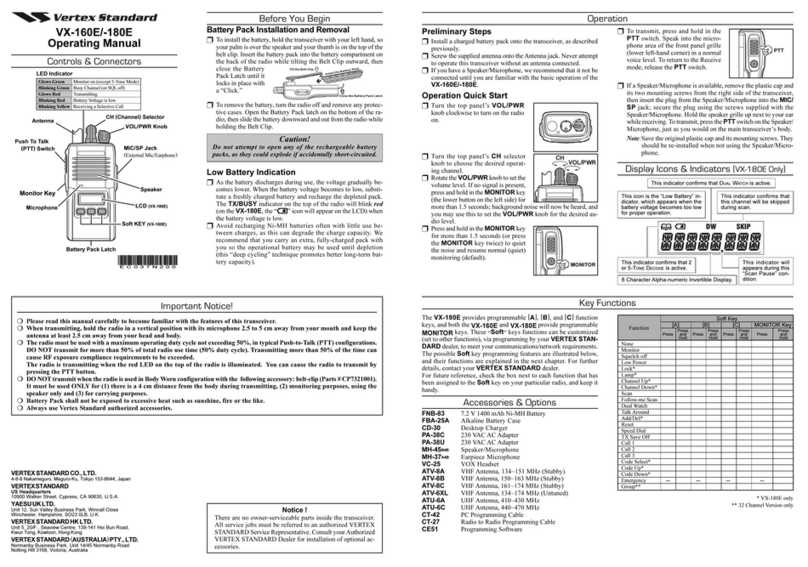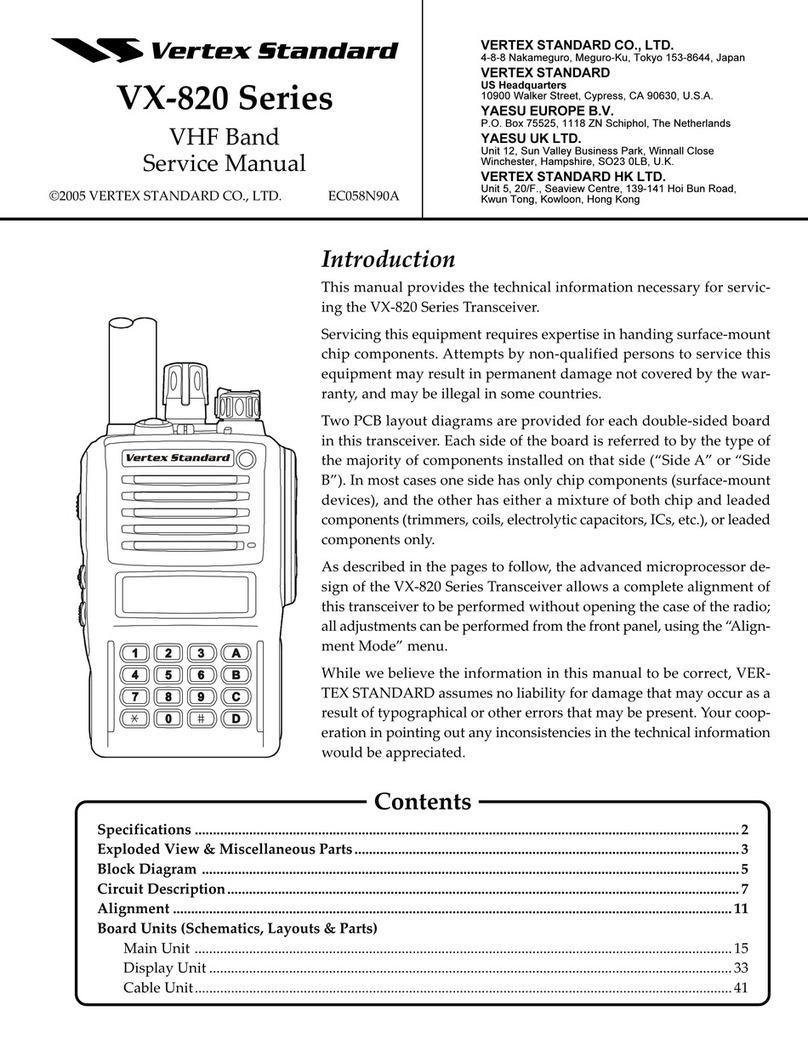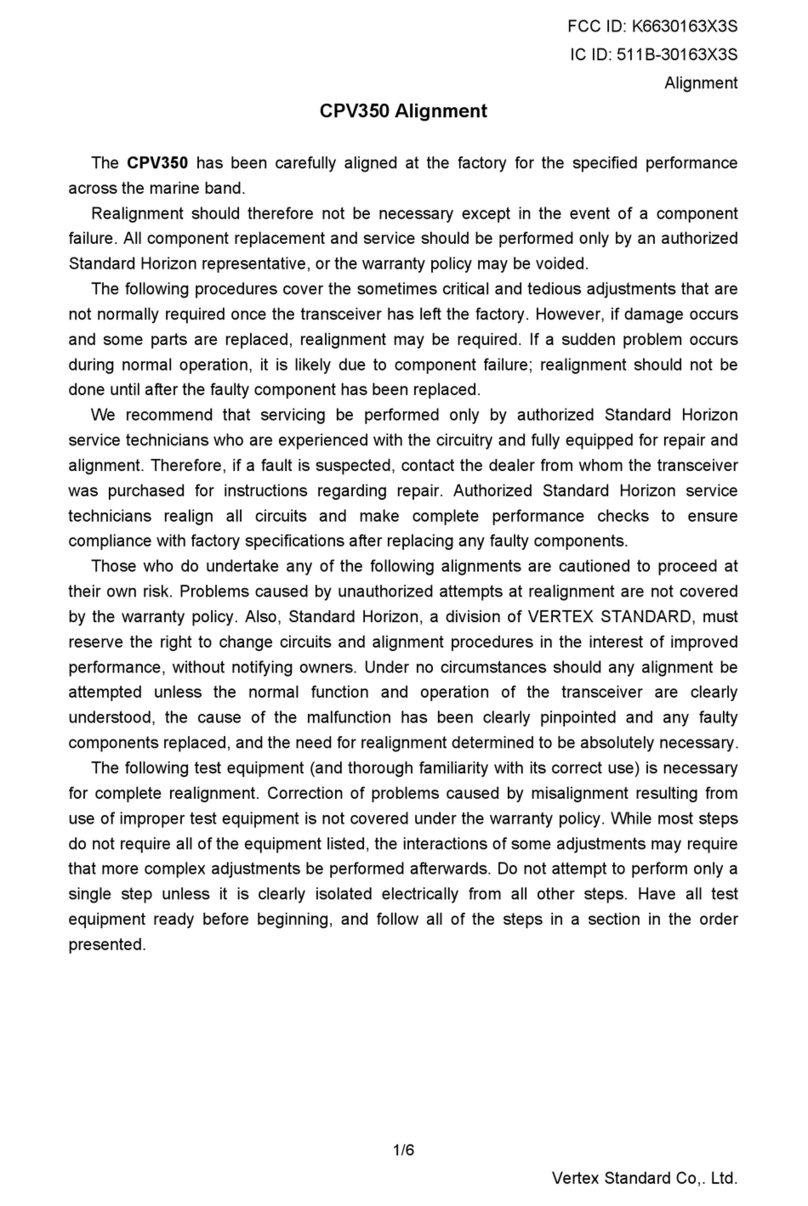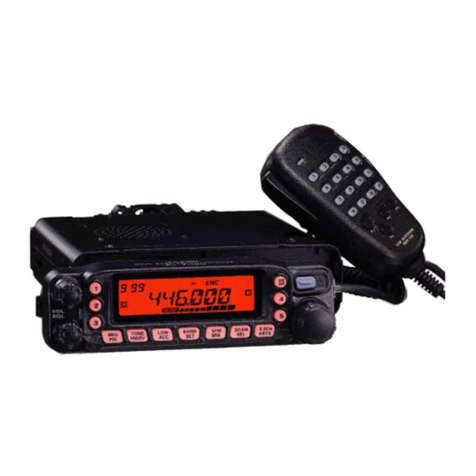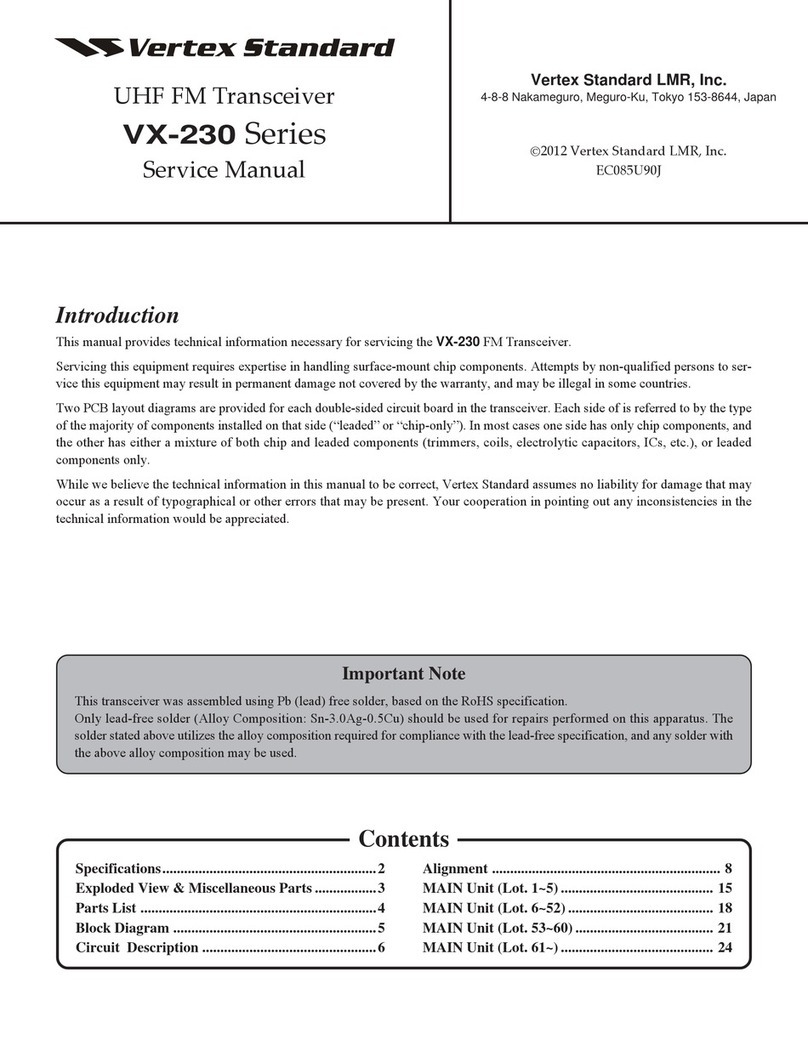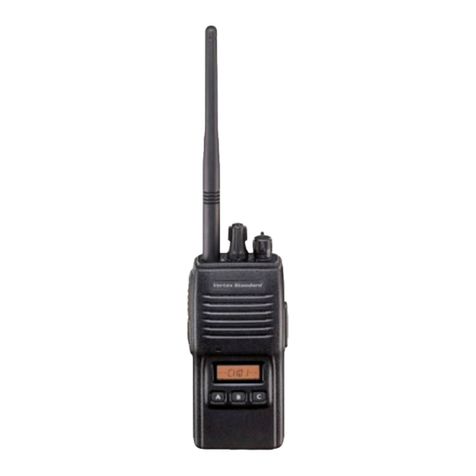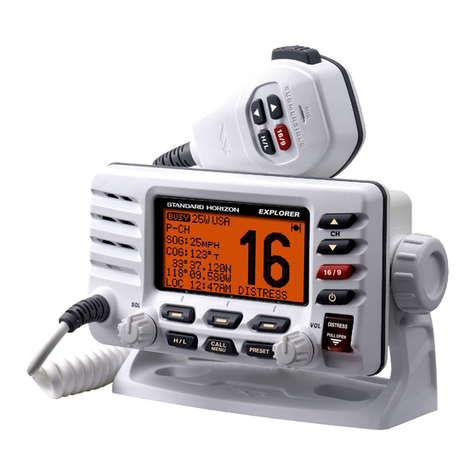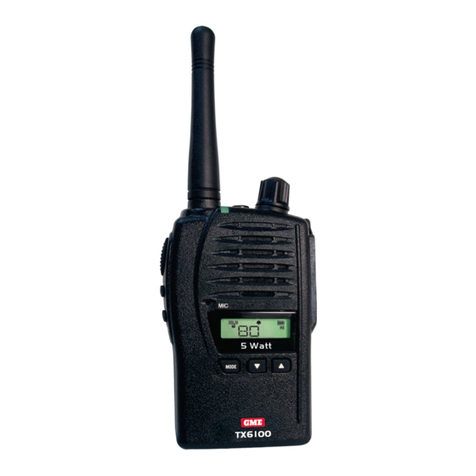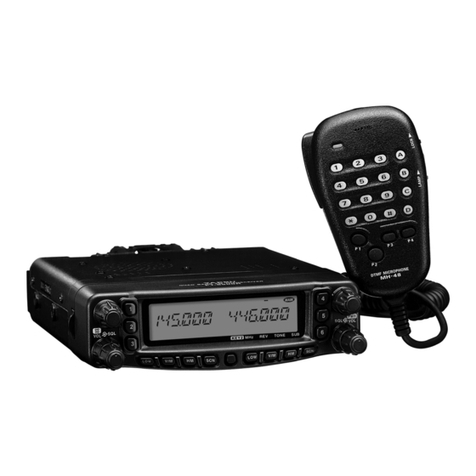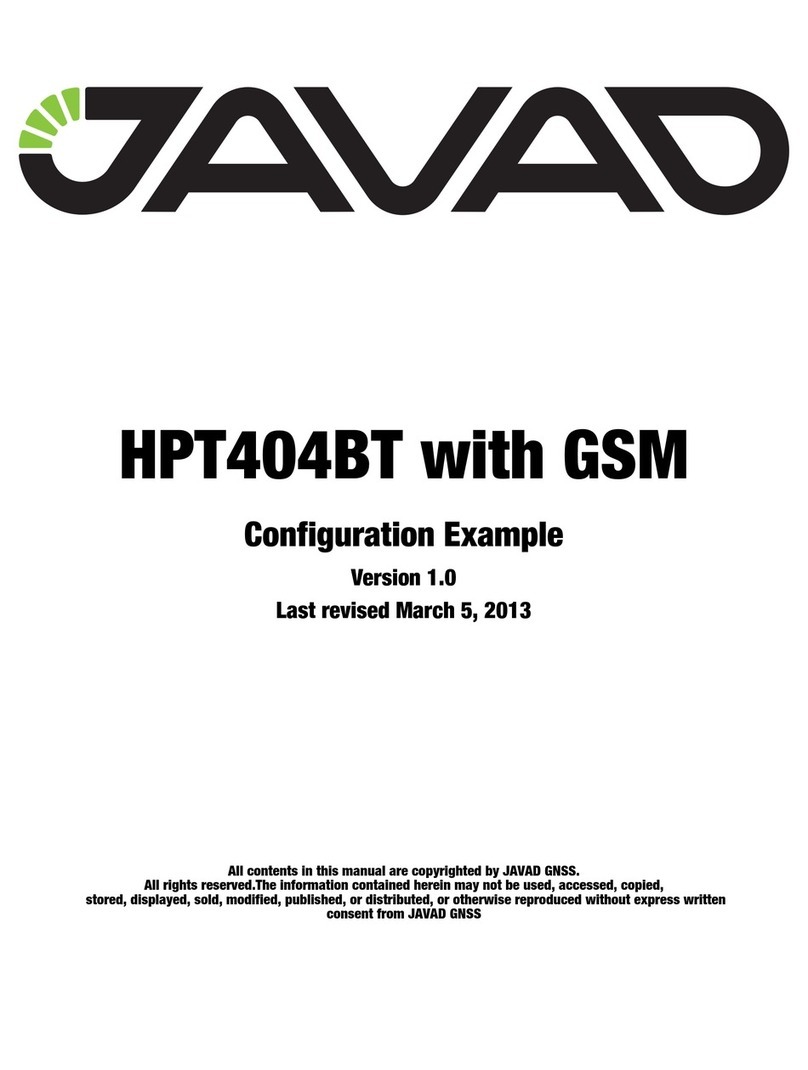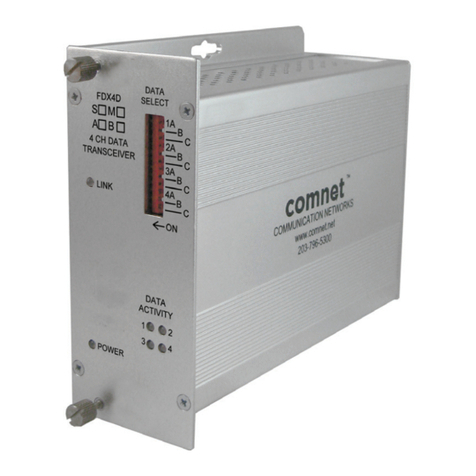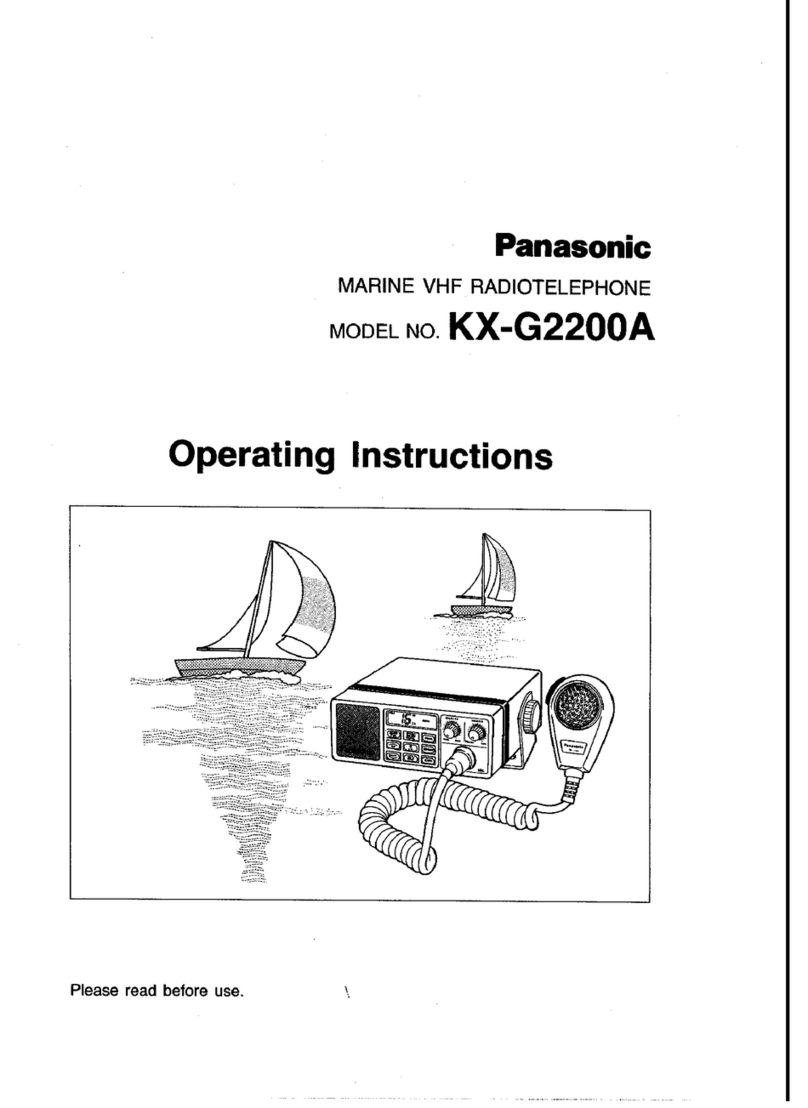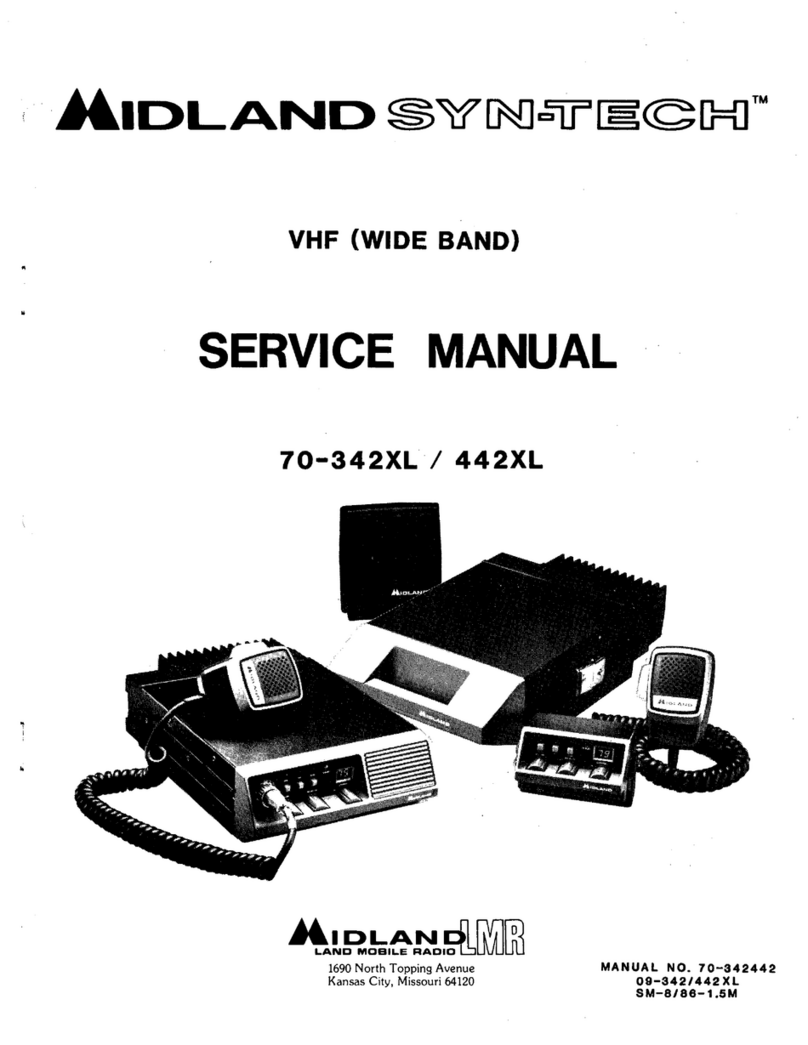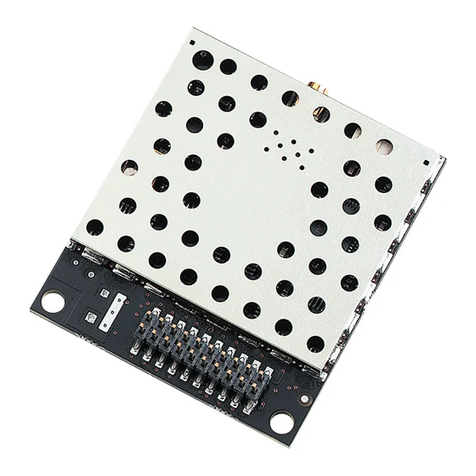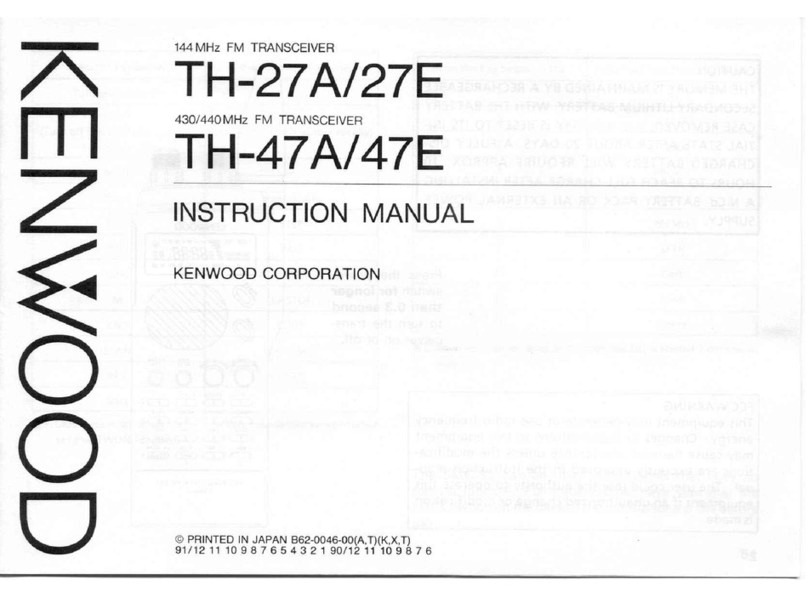
15
Circuit Description
The resulting DC squelch control voltage is passed
to pin 19 of the microprocessor . If no carrier
is received, this signal causes pin 6 of
() to go low and pin 89 of to go
high. Pin 6 of signals ( ),
( ) and ( ) to disable the
supply voltage to audio amplifiers and
, while pin 89 makes ( ) hold
the green (Busy) half of the LED off, when pin 6 of
is low and pin 89 of is high.
Thus, the microprocessor blocks output from the au-
dio amplifier, and silences the receiver while no sig-
nal is being received, and also during transmission.
When a carrier appears at the discriminator, noise
is removed from the output, causing pin 19 of
to go low and the microprocessor to blink the busy
LED via .
The microprocessor then checks the DTMF decoder
chip on the Optional Unit, the CTCSS and the CDCSS
code for DTMF or CTCSS or CDCSS code squelch
information, if enabled, respectively. If not transmit-
ting and CTCSS or CDCSS is not activated, or if the
received tone or code matches that programmed, the
microprocessor stops scanning, if active, and allows
audio to pass through the audio amplifier and
( ) to the loudspeaker by enabling
the supply voltage to it via , and .
Transmit Signal Path
Microphone Amplifier
Speech input from the microphone is amplified in
( ), is filtered, and is sent to
() and sent to the Dummy Unit (or Op-
tional Unit). The audio which returned from the
Dummy Unit passes through ( ) to be
pre-emphasized.
The processed audio is then mixed with a CTCSS tone
generated by microprocessor and delivered to
( ) for frequency modulating the PLL
carrier up to ±5 kHz from the unmodulated carrier at
the transmitting frequency.
If an external microphone is used, PTT switching is
controlled by ( ), which signals the mi-
croprocessor when the impedance at the microphone
jack drops.
If a CDCSS code is enabled for transmission, the code
is generated by and delivered to
() for CDCSS modulation.
If DTMF is enabled for transmission, the tone is gen-
erated by the microprocessor and applied to
the splatter filter ( ) in place of speech audio.
Also, the tone is amplified for monitoring in the
loudspeaker.
Noise Canceling Microphone Circuit
Two signals from separate internal microphones
(main and sub) are fed to the positive input (sub)
and to the negative input (main) and of
(). If the same signal level is present at
both main and sub, the main signal will be canceled
at the output of Pin 1 of . In other words, noise
from nearby sources not directly connected to the
transceiver enters the main and sub input at the same
signal and, in the absence of (stronger) voice input,
is therefore canceled out.
When a signal is only input to the main microphone,
and there is no signal at the sub microphone, the
main signal is passed as-is from .
Drivers and Final Amplifiers
The modulated signal from the VCO,
(), is buffered by (
) and amplified by ( ) . The low-
level transmit signal is then applied to the Power
Module ( ) for final amplification up
to a maximum of 5 Watts of output power.
The transmit signal then passes through the antenna
switch ( ), and is low-pass filtered to
suppress harmonic spurious radiation before deliv-
ery to the antenna.
Automatic Transmit Power Control
RF power output from the final amplifier is sampled
by and , and is rectified by
(). The resulting DC is fed back through
( ) to the Power Module, provid-
ing control of the power output.
The microprocessor selects either "High" or one of
three "Low" power levels.




















